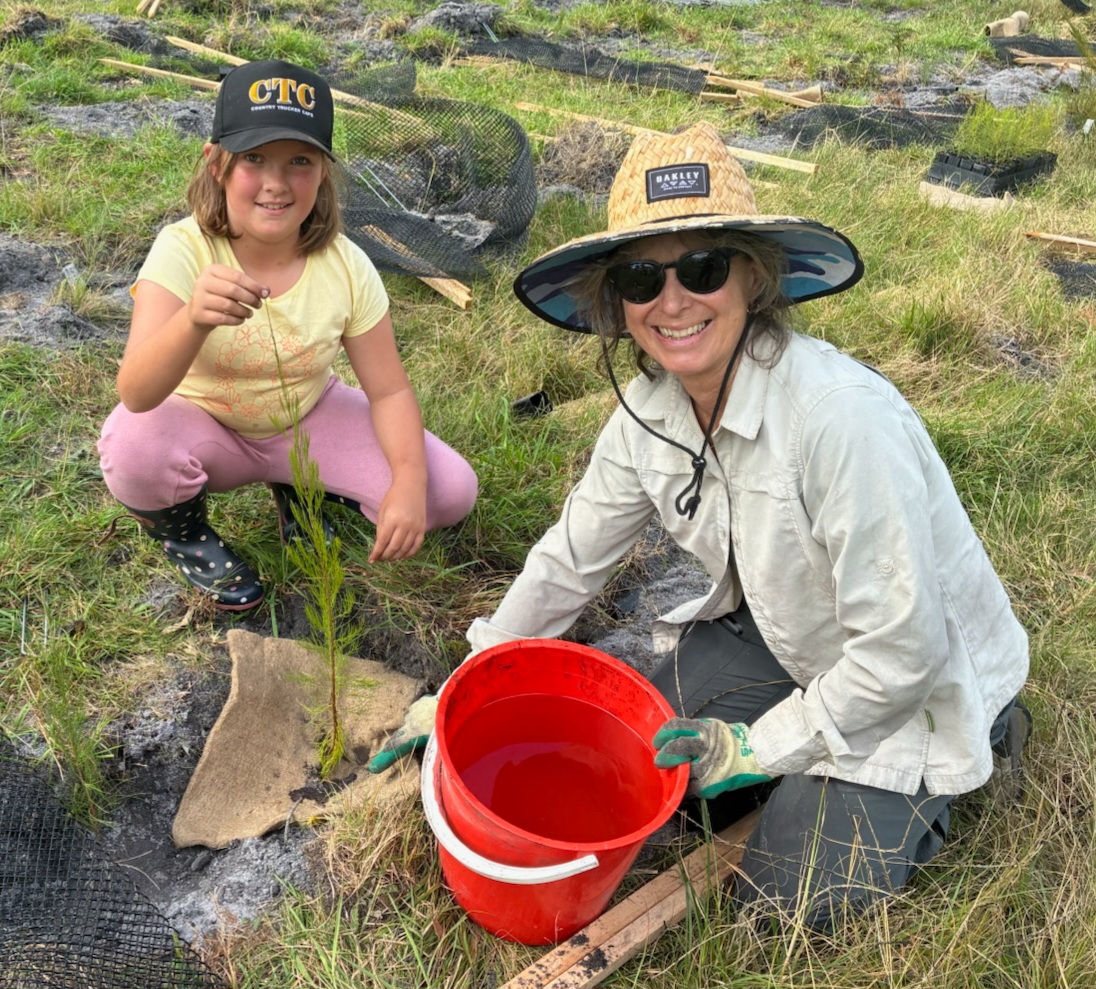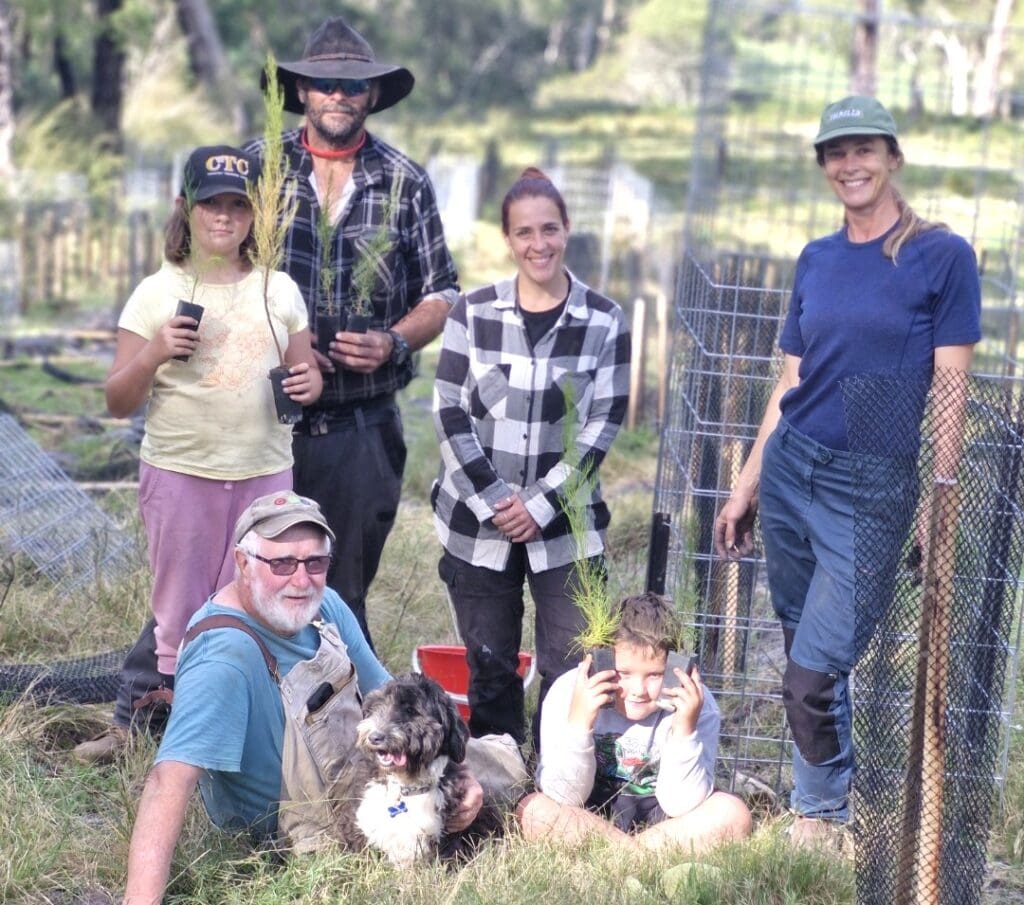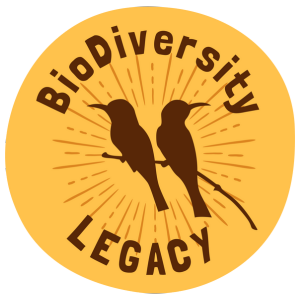
Community conservation in action
Next generation conservationists are getting involved in efforts to save the nationally threatened Glossy Black-cockatoo (Calyptorhynchus lathami) in Gippsland by participating in the Helping Hands for Sheoak project.
Freddie, Amelia and their parent (images below) recently joined a community planting day on Ted Dexter’s farm in Genoa, working hard all day to plant and guard Sheoaks to help save the Glossy.
“It is very inspiring when the younger generation turns up to help at a planting day,” said BioDiversity Legacy’s Head of Conservation Engagement & Partnerships, Dixie Fitzclarence. “It provides a measure of hope for the future.”
Expanding stands of Black Sheoaks (Allocasuarina littoralis) through strategic revegetation of seedlings is an important recovery action for the nationally threatened Glossies, whose habitat was severely impacted in the 2019/20 bushfires, explained Dixie.
The Glossies feed almost exclusively on the seed cones of Allocasuarina species and, in eastern Victoria, Black Sheoaks are the predominant feed tree species. Many stands were burnt during the fires.


Photos. Top: Biodiversity Legacy Partnership & Grants Manager, Robyn Edwards, with Amelia. Above left: Helping Hands for Sheoak planting team from left –(back) Amelia, Fred, Esther Gatnau, Dixie Fitzclarence, Ted Dexter and Fred Jnr. Above right: A highlight of the planting day was a Glossy flying over the planting site. Photo: Peter Murrell.
Sheoaks can take up to 10 years to produce cones and even longer to grow branches thick enough to support the weight of Glossies feeding on them.
The Helping Hand for Sheoaks project, which is supported by the Natural Resource Conservation Trust (NRCT) and led by the Bairnsdale-based not-for-profit environmental consultancy, Wildlife Unlimited, is revegetating stands of Sheoaks on private land, building on Landcare, Birdlife and Department of Energy, Environment and Climate Action recovery works undertaken as part of the Black Summer bushfire response.
The planting is purposefully designed to connect State Forest with a protected covenanted forest, a priority habitat area.
“This project is a powerful investment into the future of the Glossy-black Cockatoo population in eastern Victoria as well as for the next generation, so that they too can enjoy and reap the biodiversity benefits of these types of revegetation projects,” added Dixie.
Project sites range from Lakes Entrance and Marlo through to Wangarabell and Genoa.
Wildlife Unlimited project lead, Esther Gatnau, said the community was getting behind the project.
“There are many helping hands for this project. Project partners include landholders, Far East Victoria Landcare Group, Sailors Grave Brewery, Moogji Aboriginal Council, East Gippsland Rail Trail, Friends of Mallacoota, BioDiversity Legacy and Rendere Environmental Trust,” said Esther.
